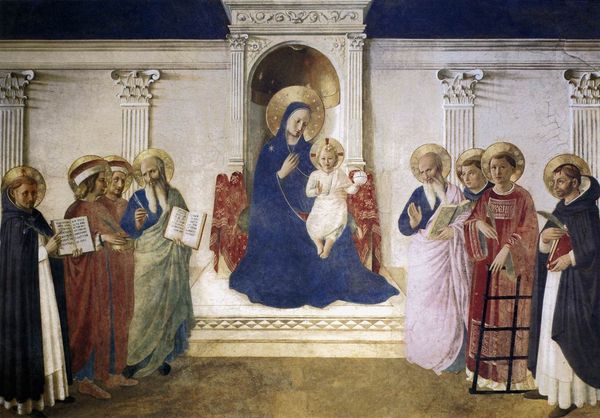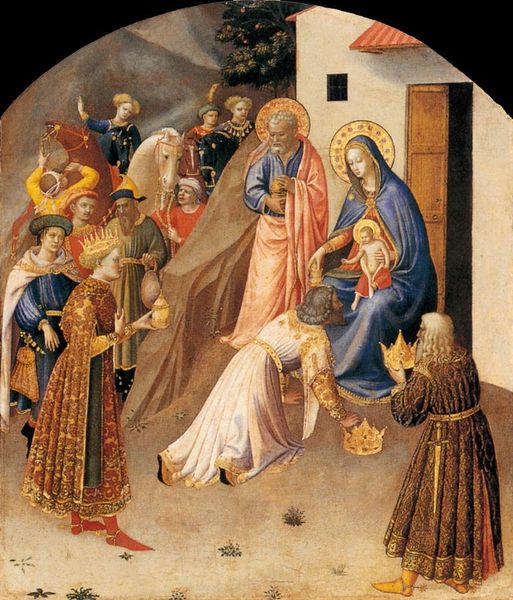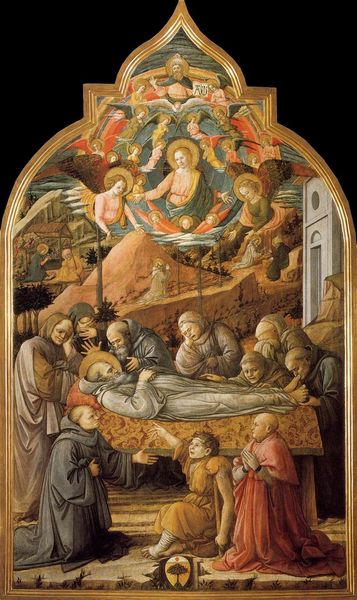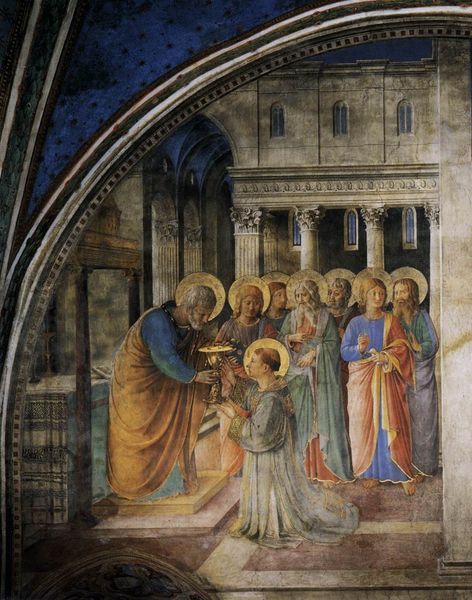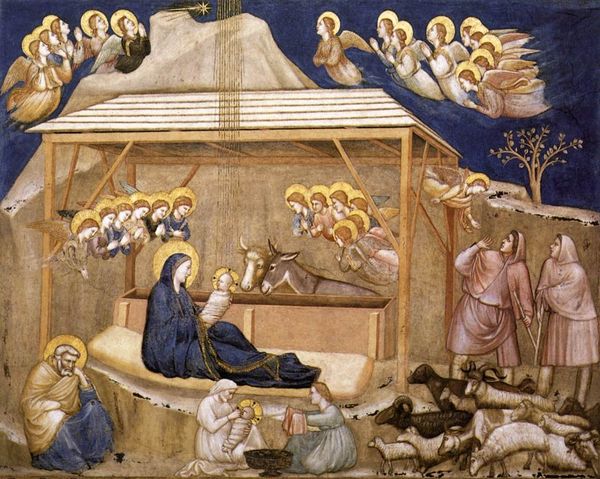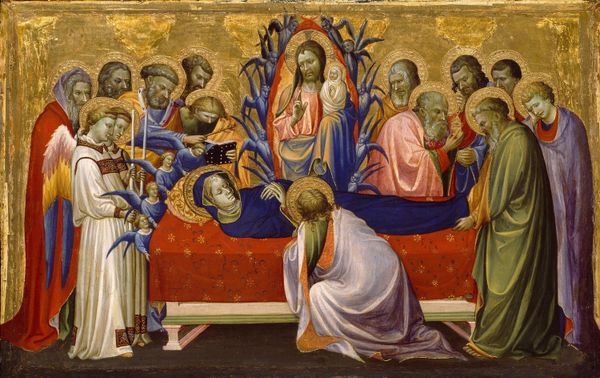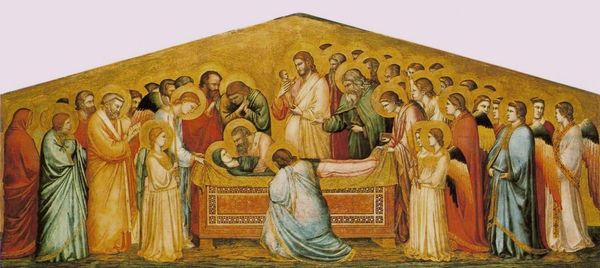
tempera, painting
#
narrative-art
#
tempera
#
painting
#
figuration
#
oil painting
#
history-painting
#
italian-renaissance
#
portrait art
Copyright: Public domain
Curator: Here we have "The Adoration of the Magi" by Luca di Tommè. This tempera on panel painting depicts a key scene in the Nativity story. Editor: It has a strikingly devotional quality, a certain austerity rendered by its somewhat limited palette of blues, reds and gold, all meticulously applied. It's an intimate scene, even with all the figures included. Curator: It's intriguing to consider how such a painting was commissioned. Was it for private devotion, commissioned by a wealthy patron for their home? The materials themselves suggest a degree of affluence, especially the use of gold leaf. Were specific workshops involved, and what kind of labor division existed for producing these works? Editor: The careful distribution of halos throughout the composition helps create a visual hierarchy. Note how the color modulations—the gradations of light to dark—are so gently and smoothly applied. Also, notice the symbolism: the gifts, the poses, each carefully rendered element contributing to the overall narrative. Curator: And think about the source of these pigments: lapis lazuli for the blues, perhaps imported from the East, cinnabar for the reds, each bearing its own journey from extraction to final application on the panel. How did the trade networks influence the aesthetic? The economic system which supported such art pieces? Editor: The figures, arranged almost symmetrically, enhance the contemplative mood. It is also intriguing to consider what this imagery and the very medium meant to audiences of the time— how this material impacted and framed viewers' perspectives. Curator: Indeed. These paintings weren't just objects of aesthetic appreciation; they were products of and participants in a complex network of economic and social forces, embodying material and ideological value in a very palpable way. Editor: I agree. Looking closer at its formal aspects makes the history tangible. Curator: Absolutely, and with such analysis, this panel tells its material history.
Comments
No comments
Be the first to comment and join the conversation on the ultimate creative platform.
